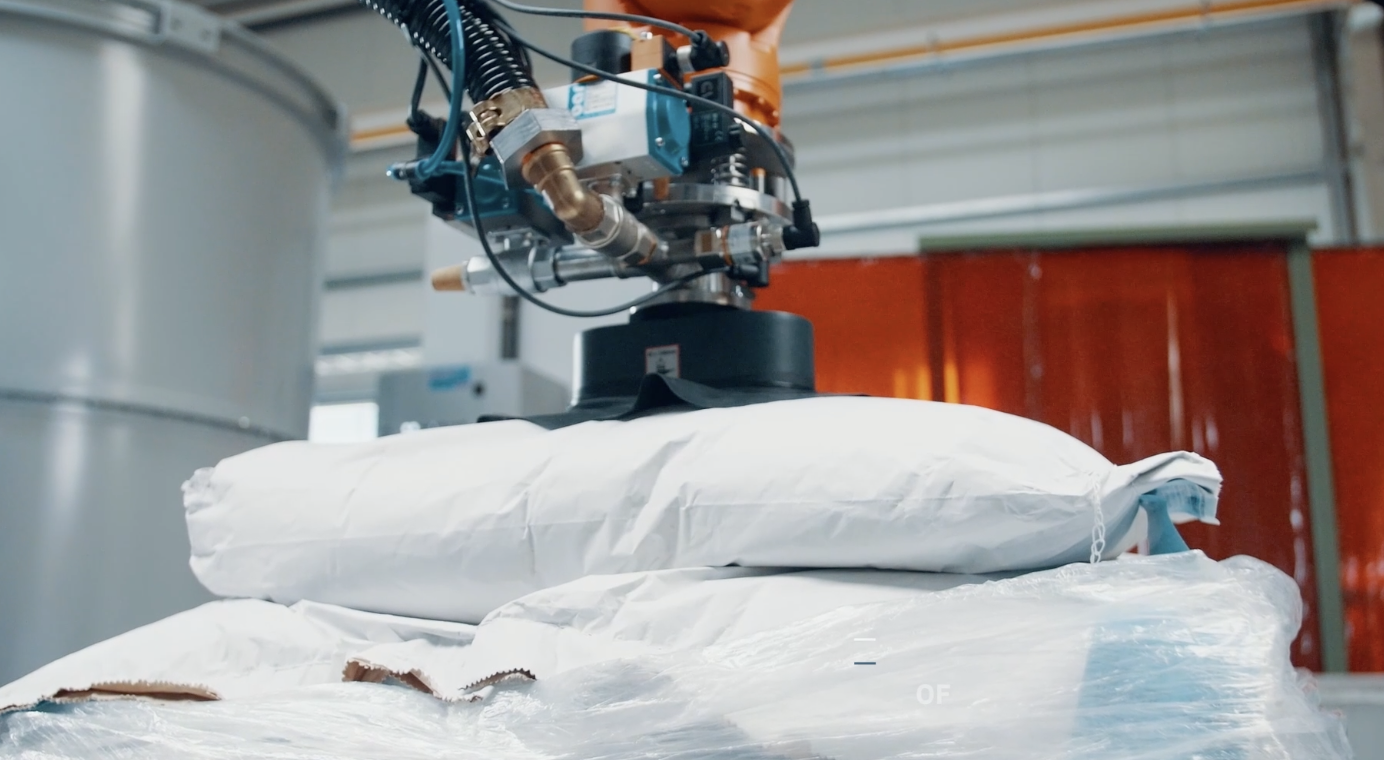
As the agricultural sector faces rising labor shortages, operational costs, and increasingly demanding consumer expectations, businesses must turn to new technologies to remain competitive. A key opportunity lies in automating repetitive and labor-intensive processes like pallet unloading, a task still largely manual in many agricultural facilities.
Recent trends confirm the shift: automation in agriculture logistics is growing steadily, with robotics adoption rising over 30% annually in key regions like Europe and North America. The challenge, however, is not just adopting automation, it’s adopting smart automation that can adapt to the complex, fragile, and often unpredictable conditions of agricultural production.
Automating pallet unloading in agriculture is not as straightforward as in industrial sectors. Agricultural products vary widely in shape, size, packaging, and even texture. Think of the difference between crates of apples, trays of lettuce, and boxes of potted flowers, all require different handling strategies. Moreover, many of these products are fragile and highly perishable. A small error during unloading can lead to bruising or spoilage, which quickly translates to financial loss. Harsh working environments such as high humidity in greenhouses or dust in outdoor areas make it difficult for traditional sensors and robots to operate reliably. Adding to the complexity, many agricultural logistics centers still rely on legacy systems, older PLCs and robot controllers that are not easily compatible with rigid, off-the-shelf automation. Combined with inconsistent pallet loading patterns, these factors make traditional scripted solutions unreliable and difficult to scale.
Artificial intelligence, particularly through computer vision and deep learning, offers a radically different approach. Rather than depending on fixed rules or perfect conditions, AI-based systems learn from real-world data and adapt dynamically to variation. For instance, deep learning models can be trained on actual product images to recognize a wide range of agricultural goods, whether they're tightly packed vegetable trays or loose crates of fruit. Unlike rigid machine vision, these systems can handle partial occlusion, deformable packaging, and unpredictable object positions.
Advanced 3D imaging technologies like stereo vision and time-of-flight allow the system to determine exact object location and orientation in space, even in unstructured or mixed pallets. This spatial awareness is critical to avoid damaging produce and to enable robotic arms to grip precisely and safely. Modern AI-based systems also integrate smoothly with existing infrastructure. By supporting standard industrial protocols and edge deployment, they can operate in real-time without depending on cloud connectivity, crucial for remote or bandwidth-limited agricultural environments. User-friendly interfaces make them accessible to staff without programming knowledge, allowing farm operators to adjust settings visually and get feedback directly from the system dashboard.
Beyond overcoming technical obstacles, AI brings clear long-term business advantages to the agricultural supply chain. Automation of pallet unloading increases throughput, reduces labor bottlenecks, and minimizes errors caused by manual handling, all while preserving product quality. Fewer product losses mean reduced waste and improved sustainability, particularly important in a sector where margins can be tight. Automation also enhances worker safety by removing the need for repetitive heavy lifting, which is a leading cause of injury in agricultural logistics.
AI systems are also highly scalable. Whether you're running a small family farm with seasonal output or a large logistics center handling thousands of pallets per week, the same AI framework can be adjusted to meet your scale and complexity. Finally, the return on investment is often faster than expected. Especially in markets facing labor shortages, AI-powered systems help stabilize operations and reduce reliance on temporary staff, delivering tangible ROI in months rather than years.
AI-powered pallet unloading is not just about faster logistics, it's about building a more resilient and adaptive agricultural operation. In a world where speed, traceability, and sustainability are becoming key differentiators, automation becomes a strategic lever rather than just a cost-saving measure. Agricultural businesses that embrace intelligent automation position themselves to thrive in this new landscape, increasing operational efficiency, reducing losses, and keeping pace with demand without compromising on quality.
At Data Spree, we’ve developed AI-powered pallet unloading systems specifically designed to handle the variability of real-world conditions, including in agriculture. Our solution combines deep learning with 3D vision to identify, differentiate, and localize products on mixed or irregular pallets. Thanks to our robust architecture, our systems integrate easily with both modern and legacy industrial robots and PLCs. And with edge deployment, they offer fast, real-time responsiveness, even in remote locations. Whether you're unloading crates of berries or flower trays, our plug-and-play solution offers the power of AI with the simplicity of intuitive automation.